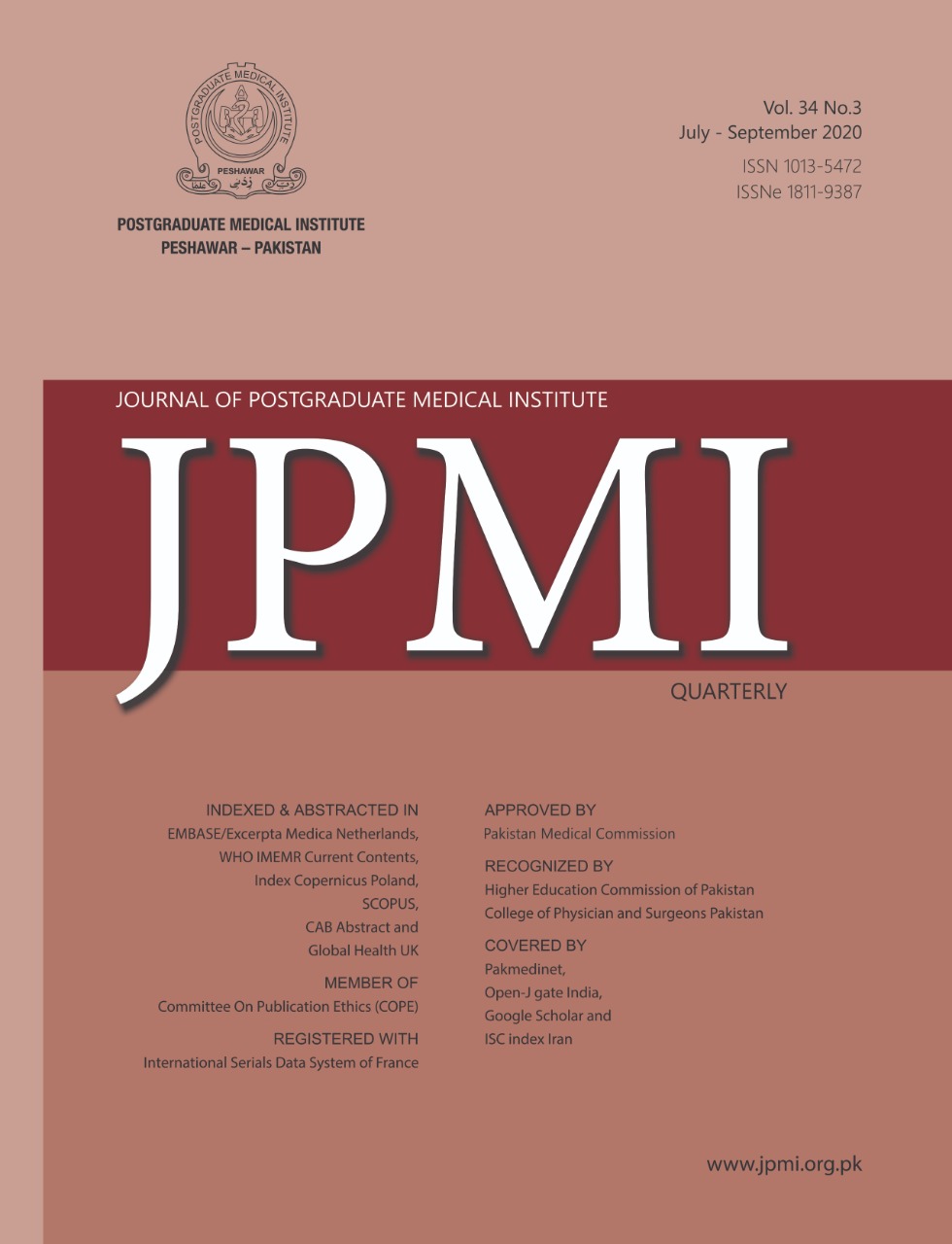PLASMAPHERESIS IN THE TREATMENT OF GUILLAIN-BARRE SYNDROME; OUTCOMES AND COMPLICATIONS
Main Article Content
Abstract
Objective: To assess the outcome of plasmapheresis in treatment of Guillain-Barre syndrome and factors related to poor outcome at hematology unit of a tertiary care teaching hospital of Pakistan.
Methodology: This cross-sectional study was conducted on 44 patients of Guillain-Barre syndrome managed with plasmapheresis at Neurology department Pak Emirates Military Hospital Rawalpindi from January 20, 2018 to January 20, 2019. Demographic profile included age, gender, variant of Guillain-Barre syndrome and duration of illness. All the complications of the procedure were recorded. Outcomes included recovery, shifting to intensive care unit and death. Pearson chi-square test was applied to relate the factors with presence of complications or poor outcome.
Results: Out of 44 patients, 27 were male and 17 were female. Allergic reaction occurred in 4 (9.1%) patients while abdominal pain during or after the plasmapheresis was observed in 3 (6.8%) patients. Out of 44 patients, 35 (79.5%) recovered, 10 (22.7%) had minor complications, 03 (6.8%) were shifted to the intensive care unit and 03 (6.8%) died. Delay in getting the definitive treatment and variant of Guillain-Barre syndrome had a significant relationship with presence of complications or poor outcome (p-value <0.05).
Conclusion: Plasmapheresis is effective treatment for Guillain-Barre syndrome with very limited side effects.
Article Details
Work published in JPMI is licensed under a
Creative Commons Attribution-NonCommercial 2.0 Generic License.
Authors are permitted and encouraged to post their work online (e.g., in institutional repositories or on their website) prior to and during the submission process, as it can lead to productive exchanges, as well as earlier and greater citation of published work.


